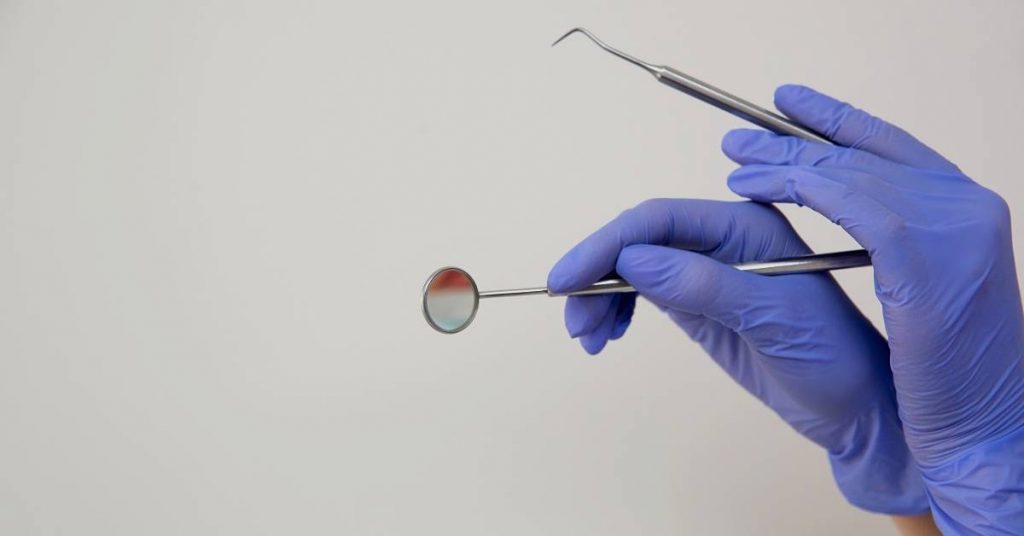Missing teeth can be a real pain, both physically and emotionally. A dental bridge is a permanent appliance that replaces one or more missing teeth, typically providing a more secure and long-lasting option than partial dentures. Bridges can also improve your appearance and help you speak and eat more effectively.
Dental bridges are made from materials like gold, alloys, or porcelain. If you’re missing a front tooth, porcelain is often the best material because it can match your natural tooth color.
If you’re considering getting a dental bridge, this article will give you all the necessary information. You’ll learn about the different types of bridges, what to expect during the placement process and the pros and cons of having a bridge.
What are Permanent Dental Bridges?
Missing teeth can cause a whole host of other problems, so it’s important to replace them as soon as possible. A dental bridge is a great way to do that. It’s made of natural materials that blend in with your teeth, so it’s practically invisible. The bridge is attached to two other teeth on either side of the gap and then bonded. This protects the integrity of your smile and prevents other teeth from shifting out of place.

So if you’re missing a tooth, don’t wait to get it replaced. Talk to your dentist about getting a dental bridge.
Advantages
Dental bridges are a great way to fill in the gaps where missing teeth used to be. Not only do they look natural, but they also restore the function of your smile.
Some of the advantages of dental bridges include:
- Restoring your smile’s appearance and function
- Preventing other teeth from shifting out of place
- Preventing gum disease and bone loss
- Reducing the risk of tooth decay
If you are missing one or more teeth, talk to your dentist about whether dental bridges are the right option.
Disadvantages
Dental bridges are one of the most popular procedures in dentistry. However, they also come with a few disadvantages.
- The first disadvantage is that dental bridges require healthy teeth on either side of the gap to be anchored. A dental bridge may not be an option if these teeth are unavailable.
- Another disadvantage of dental bridges is that they can be uncomfortable. The false tooth or teeth attached to the bridge can feel strange and bulky in the mouth. This can make it difficult to speak and eat properly.
- A final disadvantage of dental bridges is that they are not always permanent. The false teeth attached to the bridge can eventually wear down and must be replaced. This can be a costly and time-consuming process.
Despite these disadvantages, dental bridges are still a popular choice for many people. If you are considering this procedure, be sure to discuss all of the risks and benefits with your dentist.
Dental bridge types
There are four main types of dental bridges:
- Traditional Bridges
- Cantilever Bridges
- Maryland Bonded Bridges
- Implant-Supported Bridges
1. Traditional Bridges
Traditional bridges are the most common type of dental bridge. They consist of one or more false teeth, called pontics, anchored to healthy teeth on either side of the gap. Traditional bridges can be made from porcelain, metal, or a combination. Porcelain is the most popular choice because it looks natural and can be matched to your tooth color. Metal bridges are stronger and often used in the back of the mouth, where they are not as visible.
Advantages: Traditional bridges are strong and durable. They can last for many years with proper care.
Disadvantages: Traditional bridges require healthy teeth on either side of the gap to be anchored. If these teeth are unavailable, a traditional bridge may not be an option.
2. Cantilever Bridges
Cantilever bridges are similar to traditional bridges, but they only require one healthy tooth to be anchored. They are often used when there are no healthy teeth on both sides of the gap. Cantilever bridges can be made from porcelain, metal, or a combination. Porcelain is the most popular choice because it looks natural and can be matched to your tooth color. Metal bridges are more robust and often used in the back of the mouth, where they are not as visible.
Advantages: Cantilever bridges do not require healthy teeth on both sides of the gap.
Disadvantages: Cantilever bridges are not as strong as traditional bridges. They may not be suitable for people who chew hard foods or have a lot of bite force.
3. Maryland Bonded Bridges
Maryland-bonded bridges are similar to traditional ones, but they have wings bonded to the back of the adjacent teeth. These wings provide extra support and stability for the bridge. Maryland bonded bridges can be made from porcelain, metal, or a combination. Porcelain is the most popular choice because it looks natural and can be matched to your tooth color. Metal bridges are stronger and often used in the back of the mouth, where they are not as visible.
Advantages: Maryland-bonded bridges do not require healthy teeth on both sides of the gap. The wings provide extra support and stability for the bridge.
Disadvantages: Maryland bonded bridges are not as strong as traditional bridges. They may not be suitable for people who chew hard foods or have a lot of bite force.
4. Implant-Supported Bridges
Implant-supported bridges are similar to traditional ones but are supported by one or more dental implants. Dental implants are titanium posts that are surgically placed into the jawbone. They act as replacement roots for missing teeth. Implant-supported bridges are considered to be the strongest type of bridge. They can be made from porcelain, metal, or a combination. Porcelain is the most popular choice because it looks natural and can be matched to your tooth color. Metal bridges are more substantial and often used in the back of the mouth, where they are not as visible.
Advantages: Implant-supported bridges do not require healthy teeth on either side of the gap. They are considered to be the most vital type of bridge.
Disadvantages: Implant-supported bridges require surgery to place the implants. They are also the most expensive type of bridge.

How much does a permanent bridge cost?
The cost of a dental bridge depends on the materials used, the number of teeth involved, and the location of the missing tooth or teeth. Your dental insurance may also cover some of the cost.
Dental bridges are an effective way to replace one or more missing teeth. If you’re considering getting a bridge, talk to your dentist about which type is right for you and what you can expect during the placement process.
The cost of a bridge can vary depending on the type of bridge you select:
- Traditional or cantilever bridges typically cost between $2,000 and $5,000 for one pontic and a crown for each abutment tooth.
- Maryland bridges typically cost between $1,500 and $2,500 for one pontic with the framework, or wings, attached to the abutment teeth.
- An implant-supported bridge could cost between $5,000 and $15,000 for a bridge with two dental implants spanning three or four teeth.
When deciding which type of bridge is right for you, it’s essential to consider not only the cost but also the function and aesthetics of the bridge. Talk to your dentist about which option is best for you.
Frequently Asked Questions
How long does a permanent bridge last?
A dental bridge typically lasts about 5 to 15 years, depending on the health of your mouth and how well you take care of your teeth. Good oral hygiene habits and regular dental visits are essential to prolonging the life of your bridge.
How many teeth can be on a permanent bridge?
A dental bridge can span from one to three missing teeth.
Do permanent bridges fall out?
No, a permanent bridge should not fall out. However, a bridge can become loose over time. Be sure to brush and floss regularly and see your dentist for regular checkups to help prevent this from happening.







